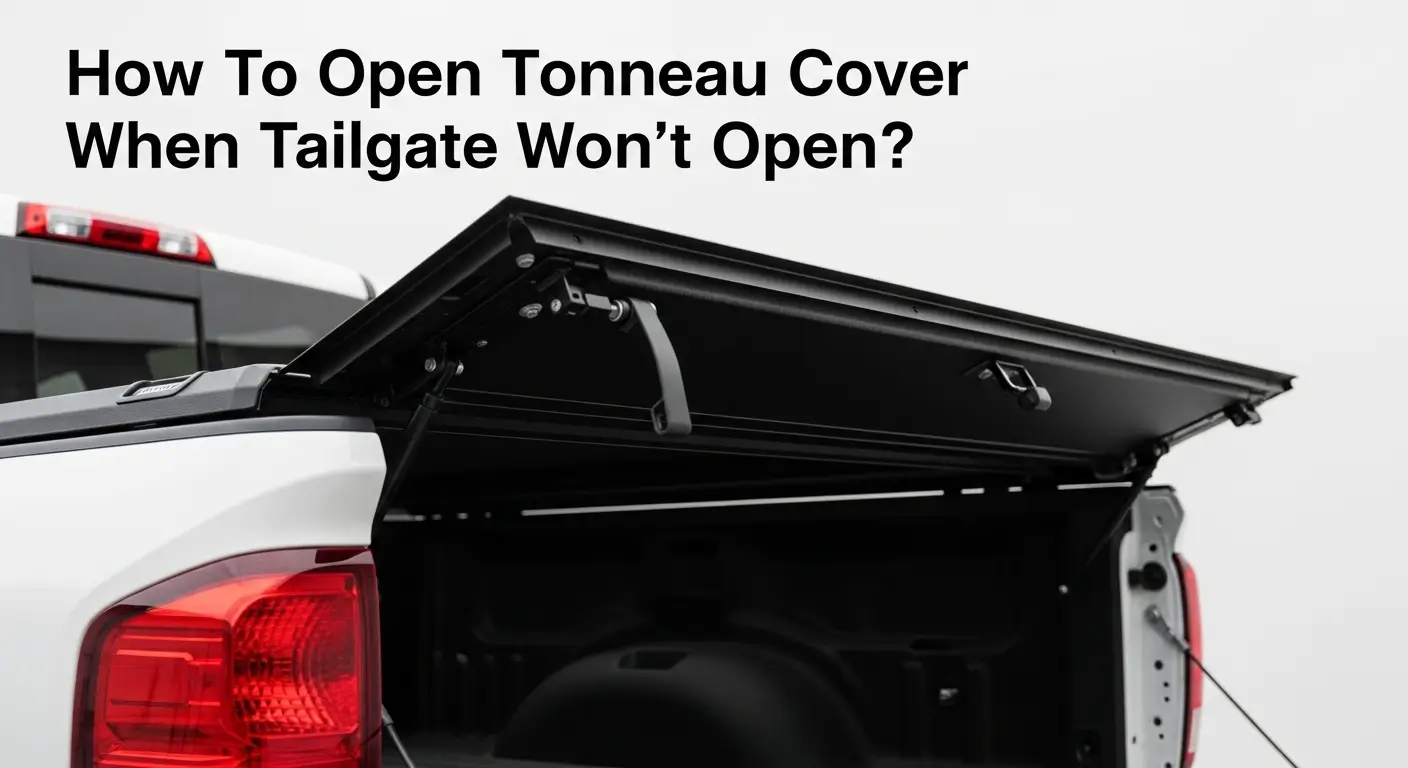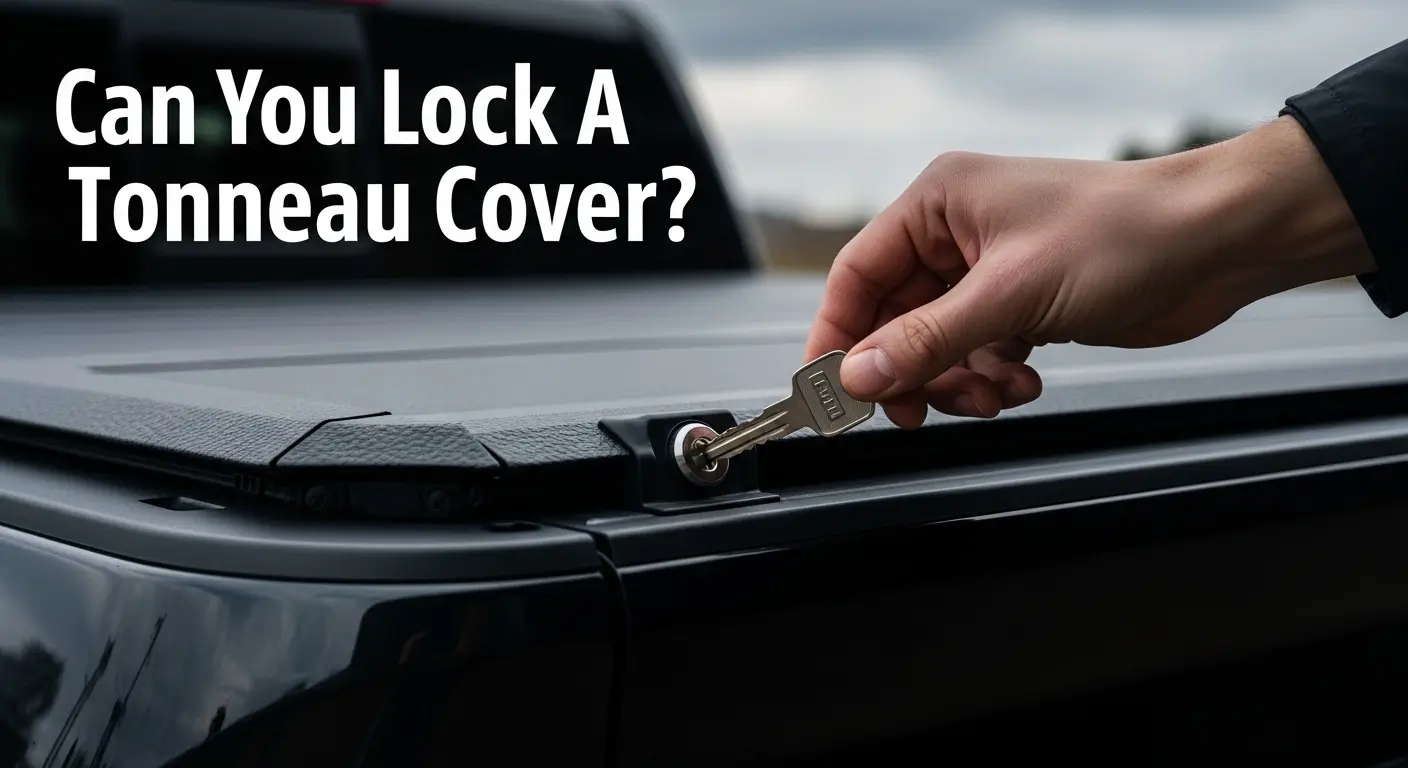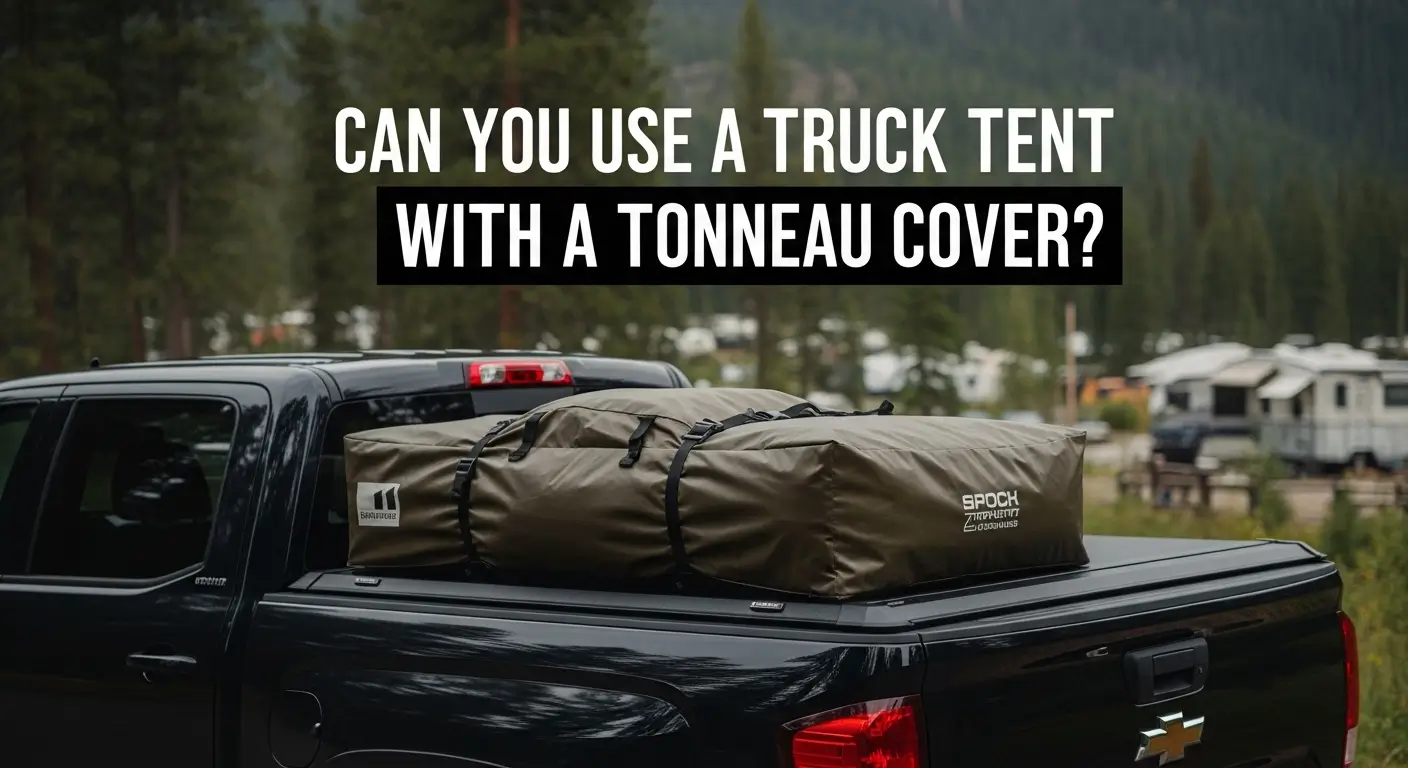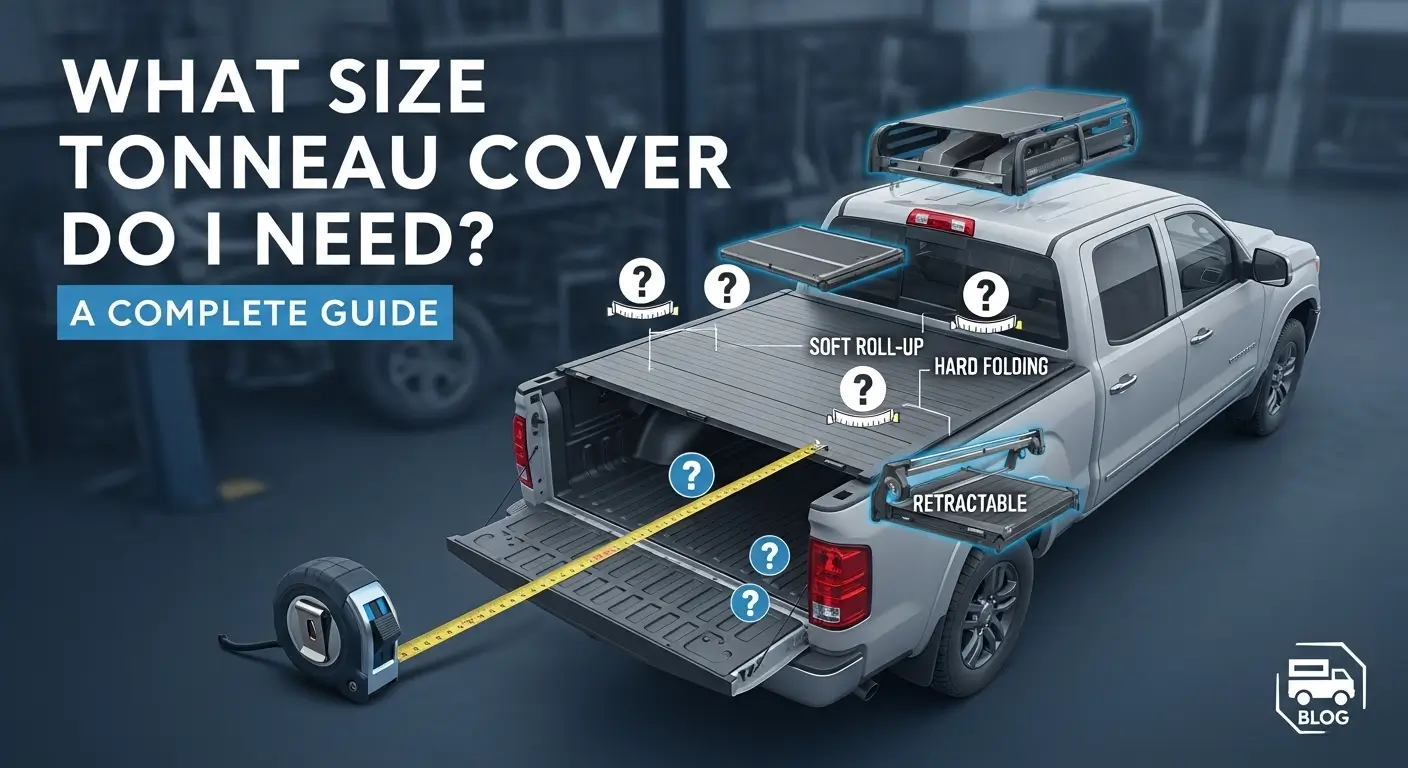Every day truck owners ask: “Can I install a tonneau cover if I already have a bed liner?” The short answer is yes – in most cases you can, but the details matter. A tonneau cover and a truck bed liner actually make a great team.
The cover shields your cargo from weather and theft, while the liner protects the bare metal from scratches, dents and corrosion. Used together, they double down on protection and preservation.
However, not all bed liners and covers fit together seamlessly.
In this guide we’ll explain how to pair them, what to watch out for, and insider tips from the field. By the end you’ll know which combinations work best, how to install them, and why many truck enthusiasts swear by this winning combo.
Key Takeaways
Bed Liner Types and Tonneau Cover Compatibility
Not all bed liners are created equal when it comes to covers. Some liners snugly fit inside the bed without adding thickness; others sit on top of the rails and can interfere with cover mounts. Let’s look at the common liner types:
Spray-On (Polyurethane/Polyurea) Liners
Best compatibility: Spray-on liners bond directly to the metal of the bed, creating a seamless shell. They add almost no thickness to the rails or edges. For virtually every tonneau cover type – from soft roll-up to retractable – a spray-on liner is cover-friendly. The cover’s clamps and rails can attach as if no liner were there.
Some experts say spray-on liners are essentially invisible to covers. The only caution is to ensure the spray coating at the top rail is smooth; rough or uneven spray texture might need a light sanding where the cover seals meet to prevent leaks. But overall, a high-quality spray-on liner usually lets you install any cover without trimming.
Drop-In (Hard Plastic or Rubber) Liners
Trickier fit: Drop-in liners are molded inserts that often rest on the bed rails. Because they can add thickness at the edges, they can block clamps or rails of a cover.
For example, a tri-fold hard cover’s clamps might not grip over a thick plastic lip. However, many modern drop-in liners are designed to sit below or flush with the rail, minimizing interference.
If you have a drop-in liner that extends above the rail, you have two choices: either trim a small section of the liner at the rail where the cover clamps, or remove/replace it with a spray-in alternative.
In practice, some owners report successfully installing roll-up or folding covers even with drop-ins by using longer clamp bolts or by cutting out just the contact points of the liner. But be aware: Rigid, over-the-rail drop-in liners are the most likely to require modification. If you do have such a liner, plan for a bit of DIY fitting or a professional adjustment.
Carpet-Style Liners / BedRug (Carpet Over Foam)
Very compatible: Carpet liners like BedRug wrap the bed floor and sides with carpet-backed foam. They typically do not cover the very top edge of the rails (or do so very thinly), so they leave the bed rail profile mostly intact.
In most cases, these liners install without trimming and a cover clamps down normally. RealTruck and other experts note that full-bed carpet liners rarely interfere with tonneau clamps; if any minor bump occurs, a quick trim will fix it.
In fact, some owners prefer carpet liners because they provide cushioning under the cover (great for sliding bikes or equipment around) and usually play well with any cover type.
Rubber Bed Mats
No conflict: A removable rubber mat lies only on the bed floor and usually does not cover the rail at all. These have essentially zero impact on cover installation.
The mat sits under your cargo, and the cover clamps to the bare rails as normal. Many owners pair a soft roll-up cover with a rubber mat to protect the bed floor while still maintaining easy access. There is no trimming or special steps needed.
Other Accessories (BedRacks, Toolboxes, Bed Slides)
If you have additional accessories (like bed racks, bed slides, or tool boxes), check their compatibility separately. For example, some bed slides will work with hard covers but may conflict with folding covers that close into the bed.
In general, most cargo-focused accessories don’t block cover clamps, but always review the installation instructions of each component together.
Bottom line: Spray-on liners and carpet liners are nearly always cover-safe. Drop-in liners need inspection; if they extend above the rail, you may need to modify them or use a cover with adjustable clamps. Rubber mats don’t affect the decision at all. Before buying a cover, check how your particular liner sits on the bed rail.
Tonneau Cover Types and How They Fit With Liners
Now let’s flip the perspective: given a liner in place, which cover designs are more or less compatible?
Soft Roll-Up Covers: These vinyl covers clamp to the top rail and roll up at the cab. They’re generally forgiving because the clamps can often be adjusted. With a spray-in or no-liner setup, they work flawlessly.
With a drop-in liner, you may need longer clamp bolts or an extended base clamp, but it’s often doable. Soft covers tend to exert less downward force, so they can conform a bit if the liner raises the rail slightly. Many DIYers find a soft roll-up one of the easiest covers to fit over a sprayed bed and even over many drop-ins.
Hard or Soft Folding Covers: These multi-panel covers (two-fold, tri-fold, etc.) usually require rails on the bed and clamps at each rail. With a flush liner or none at all, they clamp tightly.
If you have a drop-in liner, sometimes the panels will still sit level but you might have to slacken clamps slightly. Again, trimming a small notch in the liner where the clamp sits will often solve the problem.
Hard folding (like aluminum panels) may be slightly heavier, but thickness issues are the same as with soft tri-folds.
Retractable (Sliding) Covers: These covers slide into side rails and often have end clamps or bolts. A major point here is clearance: if a drop-in liner adds height, the side rails might sit higher, potentially misaligning the track. Most retractable covers (especially manual ones) have clamps similar to roll-ups, so a spray-in liner poses no issue.
With a drop-in liner, you should check that the cover can fully lock at both ends. In some cases, an extended clamp or custom bracket is needed, but many users report that with OEM drop-in liners from factories (which are often only as tall as the rail), retractables work fine.
<<<If you are looking for Top rated retractable tonneau covers in market>>>>>
Hinged (Hard Folding) Covers: These are rigid hardcovers that hinge up from the cab end (some people call them hard lids). They often use clamps at the tailgate and sometimes at mid-body.
If you have a thick drop-in liner on the rails, the rear clamp might not fit. However, because these covers tend to have fewer clamps (and sometimes form-fit to the bed shape), a minor shim or rubber pad can help adjust if needed. Many dealers will note if a particular hard folding model is not compatible with certain liners.
In practice, if you have any doubt, measure the gap between your bed rail and the tailgate (with the liner installed) and compare it to the cover’s clamp travel range. Many cover installers recommend measuring the rail thickness with the liner in place to make sure clamps can close fully.
Installation Tips for Using Both Together
Putting on a tonneau cover over a lined bed isn’t much harder than usual, but a little planning ensures a snug fit:
Measure Twice
Test-Fit Clamps
Trim Sparingly (If Needed)
Use Proper Tools
Seal and Weatherstrip
Check Tie-Downs
Why Combine a Tonneau Cover and a Bed Liner?
Maximized Protection
A tonneau cover keeps rain, snow, dirt and prying eyes out of your truck bed. A bed liner (spray-on, drop-in, carpet or rubber) cushions the bed floor and sides against cargo bangs.
Together, they preserve both your truck’s appearance and function. For example, off-roaders and hunters often use liners for toughness and covers for security and weather-sealing.
Preserves Resale Value
Studies show trucks with bed liners and covers fetch higher trade-in values. A flawless spray-in liner and a clean cover often result in offers hundreds (even thousands) of dollars higher than a stripped bedtriplec.services.
In other words, the investment in these accessories often pays off when you sell or trade your truck.
Improved Functionality and Comfort
Under a secure cover, cargo stays dry and stays put – ideal for hauling tools or camping gear. Meanwhile the bed liner’s textured surface prevents slippery loads and dampens road noise.
Many casual DIYers find this combo makes their trucks more useful: they can slide heavy gear into the bed without warping paint, then cover it and drive off in peace.
Active Lifestyle Versatility
Whether you’re hauling construction lumber, carrying muddy gear, or just going to the grocery, both accessories add value. A bed liner means you can yank things out without worrying about gouging the bed.
A cover means you can leave stuff inside overnight without fearing rain. For families on road trips or weekend adventurers with bikes/kayaks, the cover keeps belongings secure, and the liner makes cleanup (sand, mud, spills) easy.
In short, using both together is a popular trend among truck owners who want every angle of protection. But the key is choosing the right combination. Below we break down how different liners and cover styles play together.
Potential Drawbacks and How to Overcome Them
No solution is without trade-offs. Here are some counterpoints and fixes:
Access vs. Protection: Some drivers worry a tonneau makes it harder to haul tall loads. This isn’t a liner issue, but it applies: if you frequently haul lumber or furniture taller than the cab, a fixed cover might be a nuisance. In that case, a removable soft cover or one with quick-release clamps could be a compromise. You can still keep your liner in place for protection, and simply take off the cover for big jobs.
Added Weight and Cost: A heavy-duty cover plus a liner will add weight to your truck (though usually under 50 pounds combined). This is minimal compared to the truck’s capacity, but be mindful if you’re already near payload limits. Also, of course, buying and installing two accessories costs more than one. Consider your needs: if you rarely carry cargo or park indoors, maybe skip the cover. However, if you want maximum value retention, most experts argue the investment is worth it.
Water and Condensation: Some worry that a cover traps moisture, leading to rust under the liner. In practice, most high-quality covers are quite water-tight (especially hard or retractable ones) and allow any trapped moisture to evaporate when open. A textured spray-in liner actually resists rust by design. If excessive condensation is a problem (rare), simply lift the cover occasionally or use silica packs if you store very sensitive items under it.
Style Choices: A cover does alter the truck’s look. Some aficionados of “open-bed” style prefer the bare bed look or use a bed rug for a laid-back vibe. This is purely personal. If you love the finished look of a cover plus the ruggedness of a liner, that’s the intended effect of these accessories.
Overall, the benefits outweigh the minor trade-offs for most users. Being aware of the potential issues allows you to make adjustments or choose the right products from the start.
By considering compatibility issues and following a few simple installation tips, you can easily equip your truck with both a bed liner and a tonneau cover. This combo is favored by everyone from daily drivers to rugged off-roaders for the unbeatable peace of mind it offers. Ready to upgrade? Evaluate your specific truck bed, pick a liner-cover pair that suits your needs, and you’ll be set to protect your gear and your truck for miles to come.






